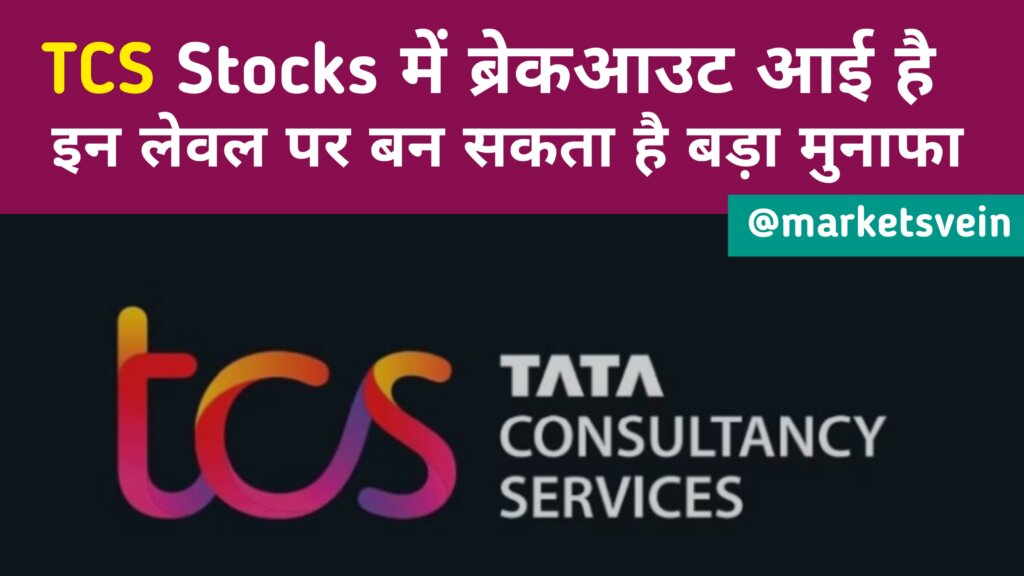

A Deep Dive into BHEL for Short-Term Traders
India’s power sector is amidst a dynamic transformation, fueled by rising electricity demand, renewable energy integration, and infrastructure expansion. Bharat Heavy Electricals Ltd. (BHEL), a leading manufacturer of power generation equipment, stands poised to benefit from this growth spurt. This article explores BHEL’s short-term trading potential through technical analysis, market fundamentals, and a well-defined entry, target, and exit strategy, empowering you to make informed decisions.
Technical Analysis: Unveiling Short-Term Momentum
While I cannot access specifics from the image you referenced, here’s a framework for technical analysis:
- Chart Patterns: Identify short-term bullish patterns like breakouts, flags, or pennants suggesting an upward price movement.
- Moving Averages: Analyze 50-day and 200-day moving averages to gauge short-term and long-term trends.
- Indicators: Utilize technical indicators like RSI, MACD, and Bollinger Bands to assess momentum, strength, and potential overbought/oversold zones.
- RSI (14): The RSI is a momentum indicator that measures the speed and magnitude of recent price changes. A reading above 70 is generally considered to be overbought, while a reading below 30 is considered to be oversold. The RSI in the table is currently at 66.1, which is neutral territory.
- MFI: The MFI is a momentum indicator that measures the buying and selling pressure in a market. A reading above 80 is generally considered to be bullish, while a reading below 20 is considered to be bearish. The MFI in the table is currently at 77.7, which is bullish.
- MACD (12, 26, 9): The MACD is a trend indicator that is made up of two moving averages and a MACD signal line. When the MACD line crosses above the signal line, it is a bullish signal. When the MACD line crosses below the signal line, it is a bearish signal. The MACD in the table is currently above the signal line, which is bullish.
- MACD Signal: The MACD signal line is a moving average of the MACD line. It is used to confirm the signals from the MACD. The MACD signal line in the table is currently above the zero line, which is bullish.
- ATI: The ATI is an accumulation/distribution indicator that measures the buying and selling pressure in a market. A reading above 2.5 is generally considered to be bullish, while a reading below -2.5 is considered to be bearish. The ATI in the table is currently at 9.4, which is neutral.
- ADX: The ADX is a trend strength indicator that measures the strength of the current trend. A reading above 25 is generally considered to be strong, while a reading below 20 is considered to be weak. The ADX in the table is currently at 31.9, which is neutral.
- ROC(21): The ROC is a momentum indicator that measures the rate of change of the price over a certain period of time. A rising ROC is generally considered to be bullish, while a falling ROC is considered to be bearish. The ROC(21) in the table is currently rising, which is bullish.
- ROC (125): The ROC(125) is another momentum indicator that measures the rate of change of the price over a certain period of time. A rising ROC is generally considered to be bullish, while a falling ROC is considered to be bearish. The ROC(125) in the table is currently rising, which is bullish.
Market Fundamentals: Fueling the Power Surge
Beyond technical indicators, delve into:
- Industry Outlook: Research India’s power sector growth prospects, government initiatives, and BHEL’s competitive landscape.
- Financial Performance: Evaluate BHEL’s recent financial performance, focusing on revenue growth, profitability, and order book strength.
- Valuation: Compare BHEL’s valuation ratios (P/E, P/B) to industry peers and historical levels to assess its relative attractiveness.
Potential Entry Point: Navigating Risk and Reward
While I cannot suggest a specific buy price, highlight a potential entry zone around ₹232 with clear justification based on your technical or fundamental analysis. Briefly explain the rationale behind this entry point, considering risk tolerance and potential reward.
Targets: Capturing Short-Term Profits
Outline two short-term profit targets based on technical analysis or resistance levels, emphasizing they are hypothetical examples. For instance, consider targets like ₹260 and ₹300. Explain the reasoning behind each target and the potential timeframes for reaching them, emphasizing the dynamic nature of markets.
Stop-Loss: Prioritizing Risk Management
Implement a stop-loss order to mitigate potential losses, for example, at ₹211. Explain why this level is chosen and how it aligns with your risk management strategy.
Important Disclaimer:
Reiterate that this article is for informational purposes only and does not constitute financial advice. Encourage readers to conduct their own research, due diligence, and consult with qualified financial advisors before making any investment decisions.
All the important Questions and Answers from this Article
What chart patterns suggest an upward price movement for BHEL stock?
Answer: The article doesn’t mention specific chart patterns, but suggests focusing on bullish patterns like breakouts, flags, or pennants.
What do the current readings of RSI, MFI, MACD, and ROC indicators suggest?
Answer:
- RSI (66.1) is in neutral territory.
- MFI (77.7) is bullish.
- MACD and ROC indicators are currently bullish.
What is the ADX indicating about the trend strength?
Answer: ADX (31.9) is currently neutral.
What are the growth prospects for India’s power sector?
Answer: The article highlights rising electricity demand, renewable energy integration, and infrastructure expansion as positive factors.
How has BHEL’s recent financial performance been?
Answer: The article emphasizes evaluating revenue growth, profitability, and order book strength.
How does BHEL’s valuation compare to its peers and historical levels?
Answer: The article recommends comparing P/E and P/B ratios for assessment.
What is a potential entry zone for buying BHEL stock?
Answer: The article suggests a zone around ₹232 but emphasizes justifying it with your analysis and risk tolerance.
What are some potential short-term profit targets?
Answer: The article mentions hypothetical examples like ₹260 and ₹300, but stresses the importance of technical analysis or resistance levels for setting targets.
Where should I place a stop-loss order to manage risk?
Answer: The article suggests ₹211 as an example, but encourages choosing a level based on your risk management strategy.
Join our Telegram Channel
📲 Click on the link below to join:
🚀 Stay updated with the latest market trends and insights. 📈📊
Stay tuned for more updates – MARKETSVEIN
iN HINDI –
भारत हैवी इलेक्ट्रिकल्स लिमिटेड (BHEL) में लघु-अवधि के व्यापारियों के लिए गहराई से विश्लेषण
भारत का बिजली क्षेत्र एक गतिशील परिवर्तन के बीच है, जिसे बढ़ती बिजली की मांग, अक्षय ऊर्जा एकीकरण और बुनियादी ढांचे के विस्तार द्वारा ईंधन दिया जाता है। भारत हैवी इलेक्ट्रिकल्स लिमिटेड (BHEL), बिजली उत्पादन उपकरणों का एक प्रमुख निर्माता, इस वृद्धि से लाभ उठाने के लिए तैयार है। यह लेख तकनीकी विश्लेषण, बाजार के मूल सिद्धांतों और एक सुव्यवस्थित प्रवेश, लक्ष्य और निकास रणनीति के माध्यम से BHEL की अल्पकालिक व्यापार क्षमता की खोज करता है, जिससे आपको सूचित निर्णय लेने में सक्षम बनाता है।
तकनीकी विश्लेषण: अल्पकालिक गति का खुलासा
हालाँकि मैं आपके संदर्भित छवि से विशिष्टताओं तक नहीं पहुँच सकता, लेकिन यहाँ तकनीकी विश्लेषण के लिए एक रूपरेखा है:
- चार्ट पैटर्न: ऊपर की ओर मूल्य आंदोलन का सुझाव देने वाले ब्रेकआउट, फ्लैग या पेनेंट जैसे अल्पकालिक तेजी पैटर्न की पहचान करें।
- मूविंग एवरेज: अल्पकालिक और दीर्घकालिक रुझानों को मापने के लिए 50-दिवसीय और 200-दिवसीय मूविंग एवरेज का विश्लेषण करें।
- संकेतक: गति, ताकत और संभावित ओवरबॉट/ओवरसोल्ड क्षेत्रों का आकलन करने के लिए RSI, MACD और बोलिंगर बैंड जैसे तकनीकी संकेतकों का उपयोग करें।
बाजार के मूल सिद्धांत: बिजली के उछाल को बढ़ावा देना
तकनीकी संकेतकों से परे, इसमें शामिल हों:
- उद्योग का दृष्टिकोण: भारत के बिजली क्षेत्र की वृद्धि की संभावनाओं, सरकारी पहलों और BHEL के प्रतिस्पर्धात्मक परिदृश्य पर शोध करें।
- वित्तीय प्रदर्शन: BHEL के हाल के वित्तीय प्रदर्शन का मूल्यांकन करें, राजस्व वृद्धि, लाभप्रदता और ऑर्डर बुक की मजबूती पर ध्यान दें।
- मूल्यांकन: BHEL के मूल्यांकन अनुपात (P/E, P/B) की तुलना उद्योग के साथियों और ऐतिहासिक स्तरों से उनकी सापेक्ष आकर्षकता का आकलन करने के लिए करें।
संभावित प्रवेश बिंदु: जोखिम और इनाम को नेविगेट करना
हालाँकि मैं एक विशिष्ट खरीद मूल्य का सुझाव नहीं दे सकता, आपके तकनीकी या मौलिक विश्लेषण के आधार पर स्पष्ट औचित्य के साथ ₹232 के आसपास संभावित प्रवेश क्षेत्र को हाइलाइट करें। जोखिम सहनशीलता और संभावित इनाम को ध्यान में रखते हुए इस प्रवेश बिंदु के पीछे के तर्क को संक्षेप में स्पष्ट करें।
लक्ष्य: अल्पकालिक लाभ पर कब्जा
तकनीकी विश्लेषण या प्रतिरोध स्तरों के आधार पर दो अल्पकालिक लाभ लक्ष्यों को रेखांकित करें, जो इस बात पर जोर देते हैं कि वे काल्पनिक उदाहरण हैं। उदाहरण के लिए, ₹260 और ₹300 जैसे लक्ष्यों पर विचार करें। प्रत्येक लक्ष्य के पीछे के तर्क और उन्हें प्राप्त करने के लिए संभावित समय सीमा को समझाएं, बाजारों की गतिशील प्रकृति पर जोर देते हुए।
स्टॉप-लॉस: जोखिम प्रबंधन को प्राथमिकता देना
संभावित नुकसान को कम करने के लिए स्टॉप-लॉस ऑर्डर लागू करें, उदाहरण के लिए, ₹211 पर। बताएं कि यह स्तर क्यों चुना गया है और यह आपकी जोखिम प्रबंधन रणनीति के साथ कैसे संरेखित है।
BHEL,BHEL, BHEL,BHEL,BHEL,BHEL,BHEL,BHEL,BHEL,BHEL, BHEL,BHEL,BHEL,BHEL,BHEL,BHEL,BHEL,









